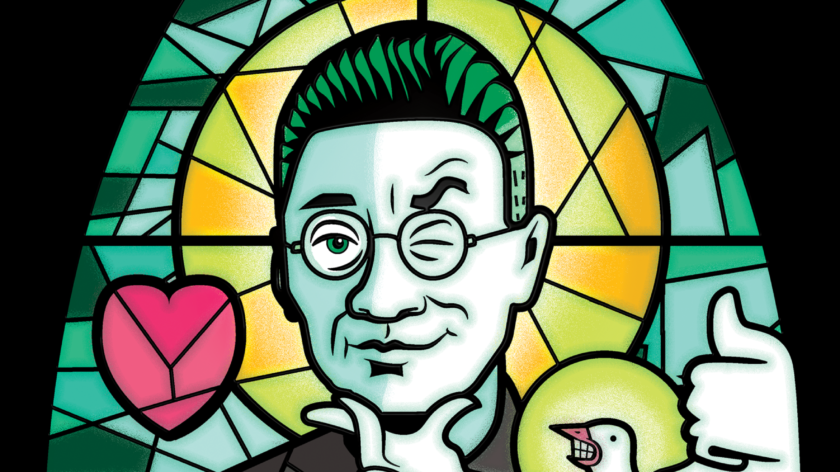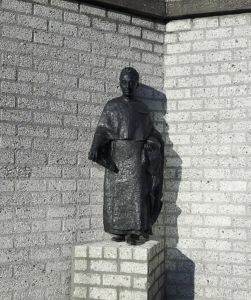Radboud University plans festivities around Titus Brandsma’s canonisation
-
 Titus Brandsma. Illustration: Roel Venderbosch.
Titus Brandsma. Illustration: Roel Venderbosch.
The word is out: Titus Brandsma will soon be canonised. The Titus Brandsma Institute has already started preparations to celebrate the canonisation. The new book about the priest and former rector magnificus of Nijmegen University is being printed as we speak.
It had previously been rumored, but as of Thursday, November 25, Titus Brandsma’s future canonisation is finally official. Pope Francis has given his blessing, which means the plan is greenlit. This makes the former priest and rector magnificus of the Radboud University the second saint from the city of the Waal, after Jesuit Petrus Canisius (1521 – 1597).
Brandsma (1881 – 1942) was a priest, professor and later rector magnificus at Radboud University. He is mainly known to the general public because of his resistance against Nazism during the Second World War. He died in the Dachau concentration camp in 1942. Because of his death as a martyr, he was beatified by Pope John Paul II in 1985.

Mediator between God and man
Titus Brandsma will now be officially canonised. The exact definitions of these terms are complicated, according to Christoph Lüthy, science historian at the Faculty of Philosophy, Theology and Religious Studies (FFTR). ‘Think of it as a kind of hierarchy: first you get blessed, then you become a saint,’ he says. ‘A canonisation therefore counts as a higher rank. Both honorary titles are official awards by the Catholic Church, confirming that you are a mediator between God and man.’
Brandsma will be canonised because he, posthumously, ‘miraculously cured’ the American Michael Driscoll of a form of cancer that was considered incurable. This would be the case because Driscoll, who was a Carmelite (a Roman Catholic mendicant order, ed.) like Brandsma, prayed to the former rector magnificus every day.
In the process of canonisation, a team of independent Catholic doctors declared that this healing was medically impossible, leaving prayer as the only explanation. In the following step, it was up to the theologians to determine whether the supernatural healing had come about through the mediation of Brandsma. Finally, the Pope had to acknowledge this ‘miracle’. This happened on the 25th of November. Lüthy: ‘With that, the declaration is almost complete: we will just have to wait for the official canonisation in St. Peter’s Square in Rome.’
Festivities
Spokesperson Ilja Kramer says that the Titus Brandsma Institute at Radboud University is especially proud of the fact that Brandsma is receiving recognition for his deeds as a human being and as an intellectual. ‘The miracle of healing is beautiful, but the real miracle is still that of his work as rector and his resistance against the Nazis,’ Kramer states.
‘The real miracle is that of his work as rector and his resistance against the Nazis.’
To celebrate the canonisation, the institute will soon publish a book together with the FFTR. ‘In it, we will add aspects of his life from a popular science perspective,’ says Kramer. ‘It is already being printed as we speak, so hopefully it will come out around the time of the declaration.’
Festivities are also planned. Kramer: ‘As the approval was on the cards for a while, we had already developed a whole scenario. There will be an academic ceremony and a tour along places that were special to Brandsma.’ We will add a new plaque onto the statue of Brandsma (next to the Cultuurcafé on the Pieter Bondamplein, ed.) as well.
Rome
It is still unknown when exactly Brandsma will be canonised. The event probably will be announced in the coming weeks. The canonisation will take place during an official ceremony in Rome, most likely in 2022. Representatives of the institute, the university and the theological faculty will be present from Nijmegen.



